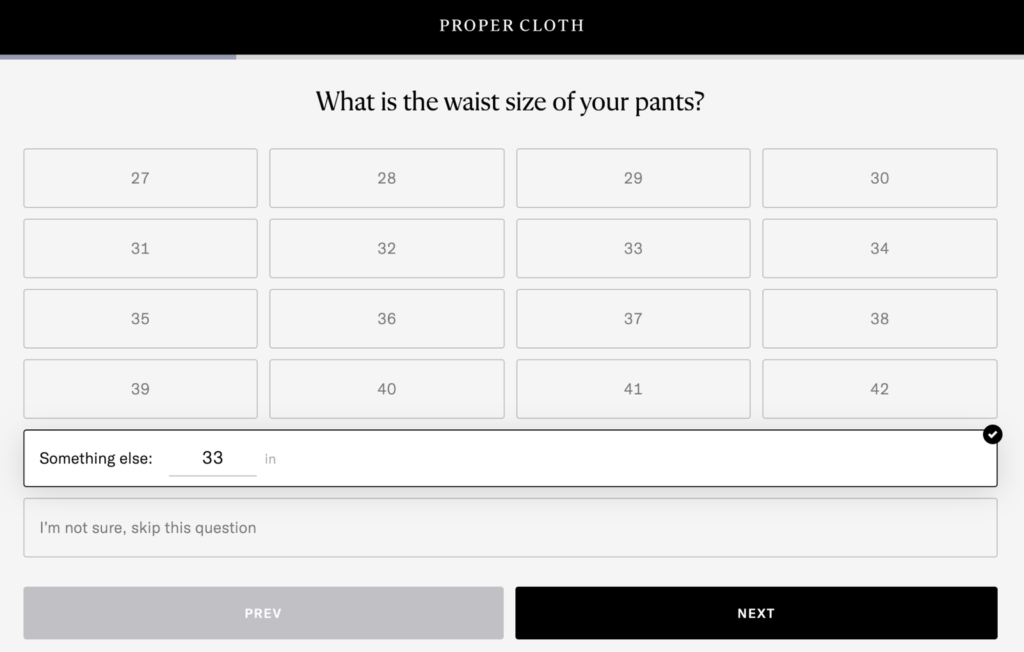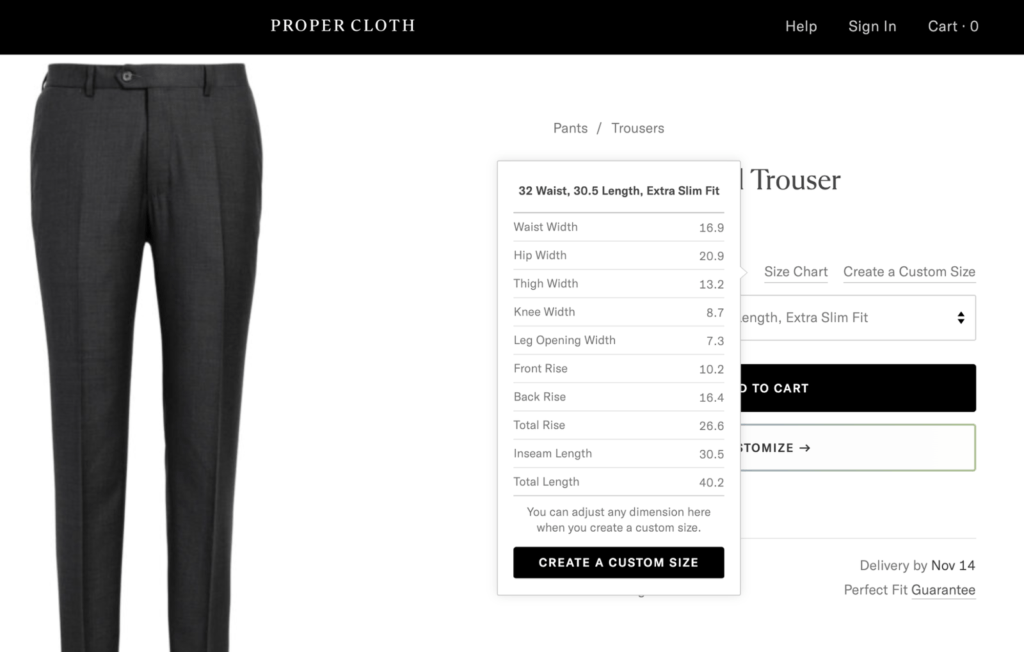How It Should Fit: Comfortably hugging your waist
A well-tailored pair of pants should rest on your body without the need for a belt to hold them in place. Fastening the waistband should be easy. With the waistband closed and the pants zipped, the waistband and front of the pants should drape cleanly and free of tension lines when you are standing upright.
The Proper Cloth rule of thumb is that the waistband should fit firmly against the body, but still allow you to insert two or three fingers between the waistband and your body with relative ease. The waistband should not be so tight that fastening it requires much force or so loose that it sags and requires a belt to keep the pants up. The goal is to achieve a clean, polished appearance while feeling comfortable.
Waist Width Too Small: Tension lines near the waistband
One sign that the Waist Width is too small is if you cannot button the pants. In this case, you can find your correct Waist Width by measuring the distance between the center of the button to the outer edge of the buttonhole while wearing them with the zipper fully closed. Divide that measurement in half and add it to the Waist Width in your saved pants size.
Another sign of a Waist Width that’s too small is the appearance of tension lines just below the waistband when the pants are buttoned/zipped up. Increasing the Waist Width a bit will relieve these horizontal pulling lines.
A third sign is if the pockets bend open noticeably at the hip area. This bending is referred to as “pocket flare.” A tight Hip Width will also contribute to pocket flaring. Because the Waist and Hip Widths are connected, it is important to consider them simultaneously in order to correct this issue. The pockets should lay flat against the pants. Otherwise, the fit will appear shrunken and uncomfortable.
Waist Width Too Large: Baggy fit at the waist
One sign that the Waist Width is too large is if you can pinch a fold of the waistband fabric between your fingers while the pants are fastened. If you can pinch 0.5” or more of excess fabric at the waistband, you should consider reducing the Waist Width.
A Waist Width that is too large will also cause the pants to sag and appear bulky. The waistband should fit well enough that you don’t need a belt at all. If the waistband is so loose that it requires a belt, you’ll notice excess fabric folding across the waistband as the belt cinches the waistband to its ideal fit.
Understanding Vanity Sizing for Pants
Like pants from most retailers, the base sizing for our pants’ waistbands includes vanity sizing. This means that, for example, selecting the option for a 30” waist in the Smart Size quiz or when ordering/creating a size from one of our Standard Size options will produce pants measuring roughly 31.75” in the circumference, which will display as 15.9” Waist Width.
All other dimensions, including Inseam Length, are true to measure. We recommend choosing the waist size you usually wear off the rack for pants or jeans. For exact garment measurements, refer to the dimensions provided on the size generator (as seen below).

